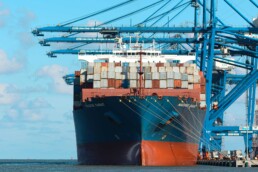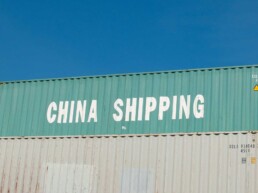Where We Are At
The recent announcement of the Trump trade review has caught the attention of businesses worldwide. Indeed, many companies were initially anxious about the possibility of steep tariffs on goods coming from China, Mexico, and Canada. However, the administration’s decision to delay immediate levies and instead focus on a thorough investigation has offered a brief reprieve. Nevertheless, the global supply chain is already responding to the possibility that new trade rules could be around the corner. Consequently, stakeholders in Third-Party Logistics (3PL), Fulfillment Services, and Warehousing and Distribution must remain vigilant. Therefore, understanding the implications of the Trump trade review becomes more critical than ever. In this blog, we will explore how this evolving situation might affect industries ranging from Order Fulfillment Solutions to E-commerce Fulfillment, and how businesses can prepare accordingly.
Understanding the Trump Trade Review
Above all, the Trump trade review aims to assess trade deficits, currency manipulation, and the balance of trade agreements with key partners. The review includes countries like China, Mexico, and Canada, which are integral to the United States’ Supply Chain Management network. This assessment could lead to policy changes designed to protect domestic industries. However, such measures might pose challenges for companies reliant on cross-border trade. Although the final outcome is uncertain, businesses should start evaluating potential shifts in Inventory Management, Shipping and Delivery practices, and even Last-Mile Delivery solutions. Furthermore, policymakers are emphasizing a more methodical approach, which may leave time for supply chain actors to adapt.
Potential Impact on Third-Party Logistics (3PL) and Supply Chain Management

First and foremost, Third-Party Logistics (3PL) providers depend heavily on streamlined cross-border operations. Consequently, any change in tariffs or trade regulations following the Trump trade review could disrupt the efficiency of Freight Forwarding, Cross-Docking, and other logistics processes. In addition, Reverse Logistics may be affected by any new mandates, as returning goods could become more complicated under stricter rules. Moreover, providers specializing in Bulk Shipping might find that altered trade agreements introduce additional paperwork or cost. Indeed, 3PL companies that proactively optimize routes and implement Supply Chain Optimization strategies will be best positioned to navigate a turbulent marketplace.
Effects on Warehousing, Distribution, and Fulfillment Services
Undoubtedly, Warehousing and Distribution centers are vital hubs that facilitate Order Fulfillment Solutions. If new tariffs or trade terms arise from the Trump trade review, the cost of holding and moving inventory could increase. For instance, Vendor-Managed Inventory (VMI) models might be pressured by higher import costs, spurring adjustments in stocking levels. Consequently, businesses may need to bolster their Order Tracking and Management capabilities to stay ahead of compliance hurdles. Additionally, providers of Fulfillment Services will likely need to invest in technology, staff training, and new strategies to remain competitive under evolving trade policies. Therefore, a robust alignment with supply chain partners could mitigate potential risks.
Navigating Cross-Border Complexities
International commerce is intricate under normal circumstances. As a result, if the Trump trade review influences regulations, cross-border shipments could face delays or additional levies. This heightened complexity may prompt more reliance on Customs Brokerage to ensure accurate declarations and tariffs. Similarly, companies might explore Dropshipping Solutions or alternate International Shipping and Import/Export routes to bypass potential bottlenecks. For many, Multi-Channel Fulfillment strategies will become crucial, helping to distribute stock more evenly and minimize customs challenges. For instance, Kitting and Assembly performed in a local Fulfillment Center could reduce cross-border friction and enhance overall flexibility
Adapting Order Fulfillment Solutions and E-commerce Fulfillment
Equally important is the impact on E-commerce Fulfillment. With online sales skyrocketing, rapid deliveries are a top priority. However, new trade requirements might slow down the flow of products, ultimately affecting Warehouse Automation timelines and Transportation Management System (TMS) setups. Indeed, speed is the name of the game in online retail, so any delays caused by new tariffs or customs protocols could harm customer satisfaction. As a result, e-commerce companies should examine their Order Accuracy and Quality Control measures, ensuring smooth operations even if political or economic changes occur. Moreover, investing in Inventory Tracking Software becomes more essential, particularly if businesses must quickly adjust to new sourcing or distribution requirements.
Ensuring Smooth Shipping and Delivery
Timely Shipping and Delivery hinges on several integrated processes. Though the Trump trade review has postponed immediate tariffs, shipping lanes may still be subject to sudden adjustments. In fact, unforeseen fees or border inspections could arise if the review ultimately leads to trade barriers. Therefore, companies must evaluate their Safety and Security Measures in Warehousing to guarantee that goods move safely across borders. Moreover, advanced 3PL Technology Solutions offer real-time visibility into shipments, aiding in Carrier Selection and Management. For instance, businesses can leverage Packaging Optimization to reduce dimensional weight charges, or engage in Freight Rate Negotiation to secure more favorable terms. Overall, adaptability will be the hallmark of success in this climate.
Monitoring Inventory Management and Reverse Logistics
Another area that could be heavily influenced by the Trump trade review is Inventory Management—specifically with regard to Freight Audit and Payment Services and Inventory Forecasting. Indeed, if tariffs rise or trade becomes more restrictive, planning for stock levels will become more complex. Therefore, Reverse Logistics strategies might also change, as products returned from international customers could incur additional fees. It is important to track metrics such as Order Fulfillment Metrics and Reporting and to explore Scalable Fulfillment Solutions that can rapidly adjust to fluctuations in demand or supply routes. Furthermore, efficient Return Merchandise Authorization (RMA) Processing can prevent disruptions that stem from evolving trade practices. Keeping an eye on On-Time Delivery statistics is also essential, because unexpected border checks could lead to higher costs and unsatisfied customers.
Beginner’s Guide to Third-Party Logistics (3PL)
The world of e-commerce is always changing, therefore understanding the roll of Third-Party Logistics is integral to keeping up. In light of this our beginner’s guide to third-party logistics (3PL) will delve into the essential aspects, offering insights into fulfillment services, warehousing, and much more.
Read More…
the Trump trade review serves as a reminder that global trade can shift rapidly, affecting businesses of all sizes. Many anticipate that policy changes, if they come, will affect everything from Inventory Cycle Counts to Cloud-Based Warehouse Management System (WMS) functionalities. Consequently, organizations must be vigilant, adopting a proactive stance that includes Demand Planning, Outbound and Inbound Logistics adjustments, and even Order Splitting and Routing. By embracing robust Fulfillment Cost Analysis and staying informed about potential shifts, companies can weather the uncertainties ahead.





